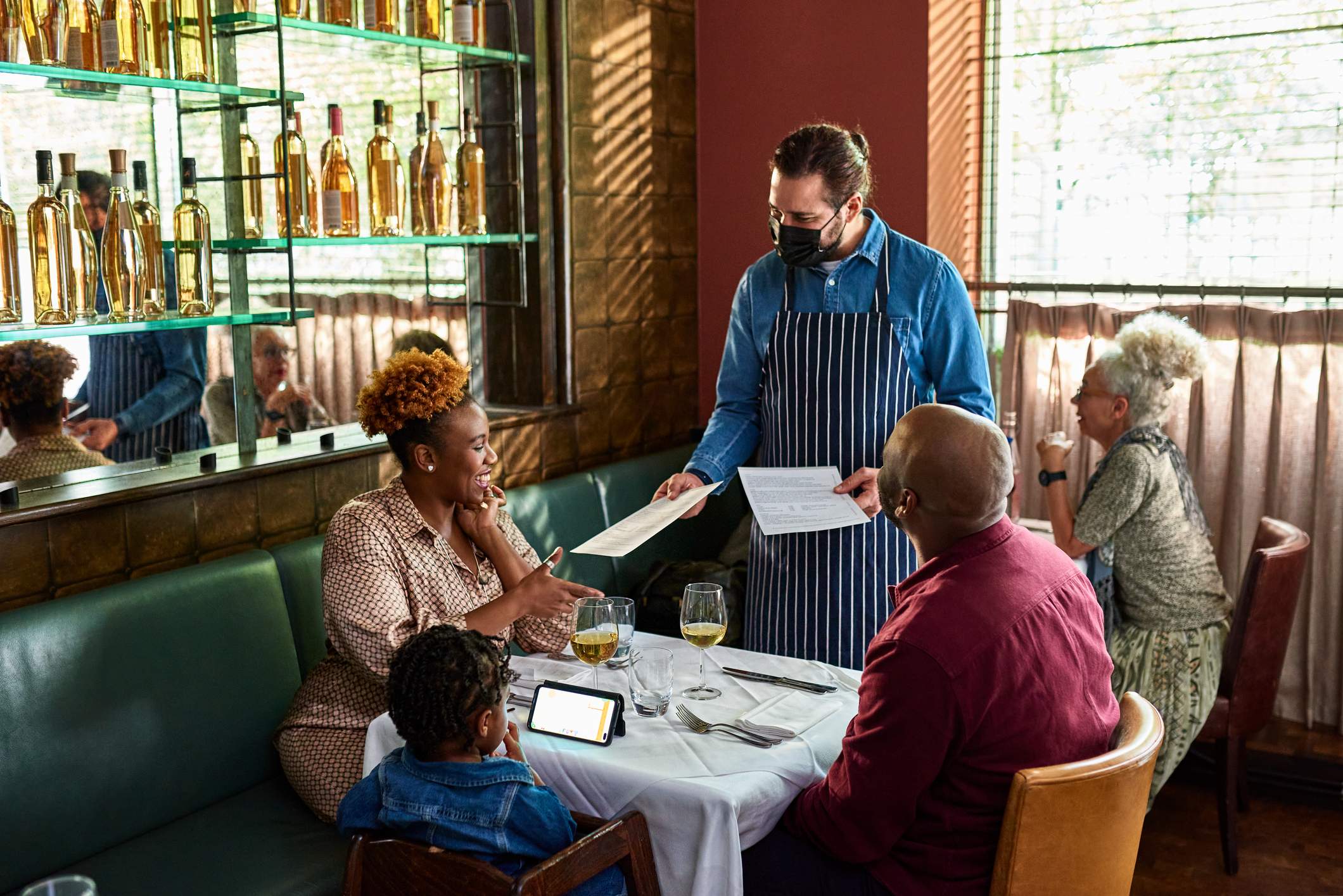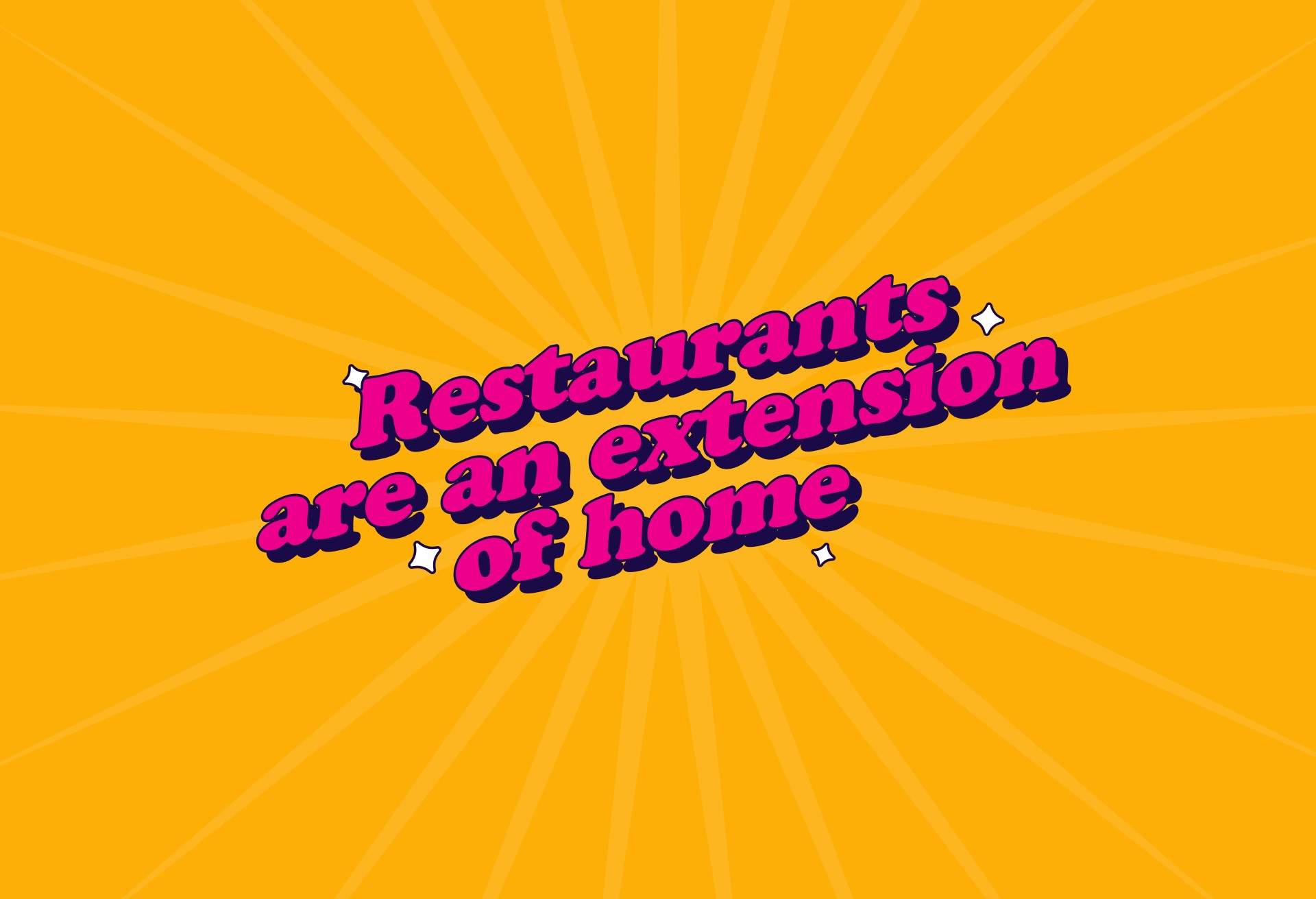Dale J. Venturini, president of the Rhode Island Hospitality Association, was enjoying dinner with her husband at a restaurant recently when she noticed a commotion a few bar stools down. “This couple was having a fight, and they were taking it out on the bartender,” she says. Venturini could see the tension in the bartender’s face. Meanwhile, drink orders piled up, slowing service for everyone in the already short-staffed restaurant.
In the pandemic era, service at even the best restaurants stalls sometimes. Waiting 15 minutes for your martini can be frustrating, but remember: the causes for that wait are often out of the restaurant’s control.
Venturini thinks diners aren’t aware of the multiple, unrelenting crises restaurants have been facing. That’s why her organization launched its “Please Be Kind” toolkit for restaurants early in the pandemic and OpenTable launched its “Kind Dining” campaign — to help people understand that when dining out, now more than ever, patience is a virtue.
In the two years since the pandemic began, the obstacles restaurants need to deal with have multiplied. Here are four things industry insiders want you to know about why service might be slower right now and how you can be a part of helping speed things up (or at least not slow them down more!).
1. Everyone is short-staffed.
Restaurants are in a historic labor crunch. At Carolina Low Country Kitchen in East Grand Rapids, MI, servers wear shirts that read: “Please be patient, there’s like 3 of us.” They speak for an entire industry. Melissa Perello, chef-owner of Octavia Restaurant in San Francisco says, “we are consistently looking for staff, pretty much round the clock.”
Even when restaurants are staffed, things can go sideways. “When omicron cases were spiking, a lot of restaurants had to close down,” says Ben Fileccia, senior director of operations for the Pennsylvania Restaurant & Lodging Association. You can’t run a restaurant when multiple staffers are out at the same time, he says.
“A lot of folks are not just doing their own job but multiple jobs—the host is also taking drink orders, managers are running food out,” says Fileccia. The people serving you have been under long-term stress, which research studies have shown to increase mistakes, which can slow down service. When that happens, diners sometimes shortchange their server when it’s time to tip.
The takeaway: Don’t cut servers’ tips for small mistakes that probably aren’t even their fault.
2. Those who are working are under extra pressure.
Front-of-house functioning has taken a hit, too. “We’ve seen people shutting whole sections of the restaurant because of the staffing shortage,” says Venturini. Diners get frustrated waiting for a table when they can see a vacant seating area. “It’s a snowball effect,” she says.
The demand for outdoor dining has left servers and food runners sprinting between distant areas of the restaurant. “We actually have a few restaurants in our association who have started using robots to run food,” says Venturini.
Additionally, restaurant workers now have an extra job: COVID cop. “In the beginning, it was enforcing social distancing, then mask-wearing, then party size,” says Fileccia. Now there are vaccine checking duties in many cities, which involve inspecting a vaccine card and ID for every diner.
“Most of the time this isn’t an issue, but sometimes when people don’t have their proof of vaccination, they have to catch a cab and go get it or something,” says Perello. When one table is seated late, the next group on the books may have to wait for their table. “It doesn’t happen frequently; we are flexible. But it can throw a wrench in things,” she says.
The takeaway: Make things easier on restaurant workers — and therefore faster for you! — by knowing the safety rules in advance and double-checking that you’ve got your proof of vaccination if necessary.
3. Supply chain issues bring kitchen chaos.
Buying ingredients is now less predictable, thanks to supply chain snags and sky-high prices. “Menu items are ever-changing based on a restaurant’s ability to purchase certain things,” says Venturini. As the type of diner who always orders the same dish at her favorite restaurant, she can relate to the disappointment of not being able to get what you want.
“Octavia’s menu has always changed daily. That gives us the flexibility to work with what’s available,” says Perello. Most other restaurants have found themselves needing to adopt a similar approach, even if their menus haven’t changed much in the past.

When menus change all the time, the kitchen doesn’t move as quickly because they’re always learning new dishes. Repetition and practice lead to efficiency and speed. Often, due to limited supply, ingredients run out mid-service, which means the kitchen needs to adapt the menu on the fly. And if diners have already ordered the item, that means servers need to return to their tables to break the news and take a replacement order, all of which eats up time and slows things down even more.
Another factor driving frequent menu changes is prices, which increased by 21 percent last year. “Think about chicken wings. The cost has gone up and up. You know this from going to the grocery store,” says Fileccia. When a staple menu item is dropped because of cost, it’s sometimes replaced with a new variation the kitchen must learn. Either that, or the price must increase, which leads to questions and complaints from diners, interactions that can slow service and lower morale.
“A lot of our ingredients are imported from Asia, Korean spices and sauces, and even rice,” says Peter Hwang, chef-owner of Southgate in Philadelphia. “You can’t tell from looking at the plate why prices went up.” For Southgate, it’s led to small increases of $1 or $2 across the menu.
The takeaway: If you can’t order exactly what you wanted, embrace the opportunity to try something new. And expect menu items to cost a little more — restaurants are passing just a fraction of the rising costs of ingredients onto you.
4. You, despite yourself, can be oblivious.
You may not realize it, but you may be unintentionally contributing to slow service. Many restaurants established time limits for reservations to maximize the number of people they can serve during a shift. When diners linger at their table, it has a cascading effect. “It delays the next table and the one after that,” says Fileccia.
Fileccia says restaurants understand that diners may want extra time with friends or family they haven’t seen for a while. “It’s hard to balance your guests’ needs with 20 months of reduced revenue,” says Fileccia.
This is also a good time to think twice about sending items back to the kitchen, another practice that slows service down for everyone. If you ordered your sandwich without pickles but it comes with them, you might consider just taking them off and moving on.
Not every issue is that simple, of course, and when it’s not, you want to take it to a manager, says Fileccia. “A lot of issues can be taken care of respectfully, kindly, and quickly,” he notes.
The takeaway: If something goes wrong, calmly ask for a manager if you can’t fix it yourself. And if you’ve been lingering at your table for longer than five to ten minutes after the check is handled (or you’re exceeding a set time limit), consider prompting your party to leave.
The main takeaway here? Some restaurateurs think that omicron crossed with the usual winter lull poses an existential threat to some restaurants this year.
“People don’t realize the damage hasn’t all been done,” says Hwang. “Last winter people were willing to get frostbite to support their favorite restaurants,” he says. This winter, not so much. “Diners need to keep doing what they’ve been doing: takeout, delivery, outdoor and indoor dining as they are comfortable.”




